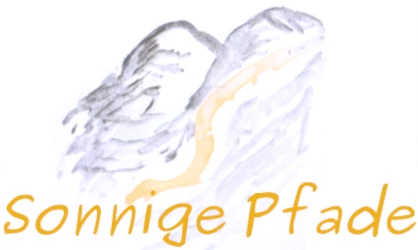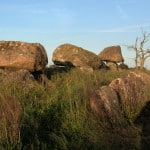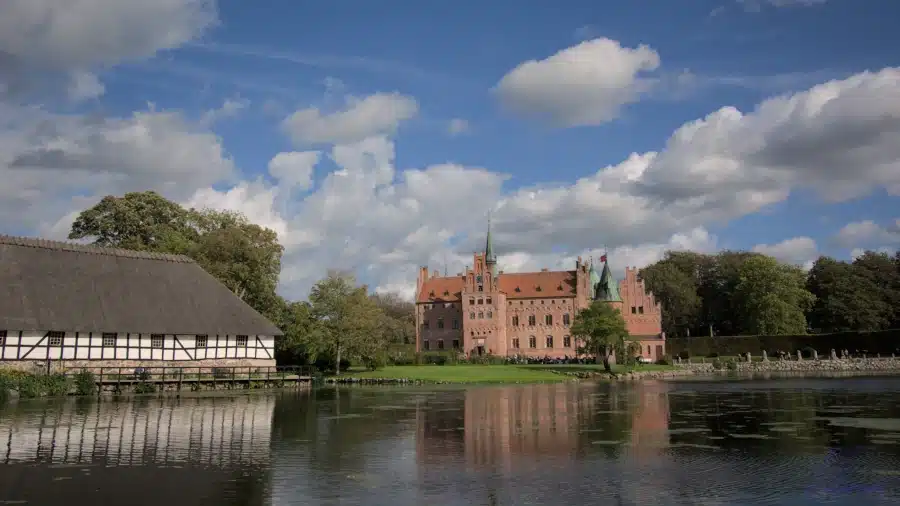
Not far from Svendborg on the Danish „central island“ of Funen stands the Renaissance castle of Egeskov, which opens its doors to visitors throughout the warm season. The exhibitions in the castle, the park with several themed gardens and other exhibitions of vintage cars, fire engines, motorcycles and camper vans appeal to a wide range of interest groups. Whether you are an individual traveler or an adventurous family, a visit to Egeskov Castle and Park is a highlight of any trip to Funen island.
From moated castle to Renaissance manor and garden paradise – Egeskov Castle through the ages
It’s a good thing that I found out about the extent of the grounds around Egeskov Castle in advance. So I was able to plan a full day for this attraction on my cycle tour in the east of Funen. From Svendborg it is only a short cycle ride through wooded countryside. Passing the castle mill, which is about 2 km from Egeskov, I reach the park while the morning sun is still low and just in time for opening time. This is also necessary, as I wanted to take some photos of the castle right at the beginning without too many tourists and in good light. The many visitors who are already heading for the entrance are initially spread out on the playgrounds and in the first gardens.
Built on oak piles – the name says it all!
Construction and history
Egeskov Castle means „oak forest„. The Danish Imperial Marshal Frands Brockenhuus married Anna Tinhuus in 1545 and was thus given the old farm of his young wife’s family. Because of the troubled times, it was customary for noblemen to have fortified castles built as residences – as did Brockenhuus. He had Egeskov Castle built in the middle of the lake – on a foundation of more than 1000 oak trees. It is said that an entire oak forest had to be cleared to build it – hence the name Egeskov. The complex, completed in 1554, was more of a castle with thick walls than a palace. At least from the outside, the interior was built in the modern Renaissance style.
Egeskov Castle remained in the possession of the Brockenhuus family until 1784. Then the privy councillor and bailiff Henrik Bille-Brahe (1709-1789) bought the estate. The Bille-Brahe family owned Egeskov until 1882, when Julius Ahlefeldt-Laurvig-Bille became the new owner and immediately began extensive alterations and renovations. The Swedish architect Helgo Zettervall took over the planning and raised the tower hoods, built a gatehouse and restored the stepped gables.
To this day, Egeskov Castle belongs to the feudal counts of the Ahlefeldt-Laurvig-Bille family.
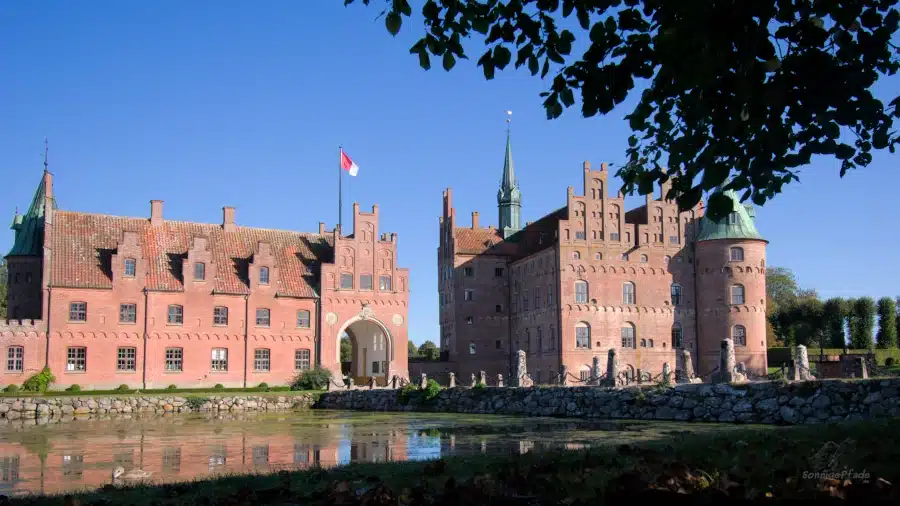
From country estate to tourist magnet – the changes at Egeskov Castle
Until the 1950s, Egeskov Castle was primarily a family residence and farm for an extensive estate with agricultural and forestry operations. It was at this time that extensive mechanization began in agriculture. Machines made large parts of the human labor that had previously been used to manage the land superfluous. From the beginning of the 1960s onwards, large numbers of farm workers throughout Europe were „made redundant“ and had to look for other work.
According to the Ahlefeldt-Laurvig-Bille family, the then owners of Egeskov, Countess Nonne and Count Gregers, did not want to simply dismiss their employees and thought about alternative employment and income opportunities. Piece by piece, the old Renaissance gardens were renovated and the parklands were transformed into a park and garden paradise. Since 1986, most of the park’s 15 hectares have been open to the public. Today, Egeskov Castle is a magnet for visitors on Funen with around 250,000 guests a year.
What is there to see in Egeskov Castle and Park?
The Renaissance castle and the Renaissance garden
The view of Egeskov Castle is famous – a brick palace in the middle of a lake in which the silhouette of the red building is reflected. A bridge connects the building with the Renaissance garden, which is lined with tall beech trees. The park paths are lined with boxwood plants cut into figures, spirals and pyramids. Hedges divide the space strictly geometrically to the right and left of the line of sight to the palace façade. The Renaissance garden was the first part of the Egeskov Castle ensemble to be redesigned by the French garden architect F. Duprat in the early 1960s and has been open to visitors ever since. An obelisk stands as a landmark at the other end of the central axis outside the castle park.

The castle itself is accessible in more than 10 rooms on two floors and the attic also contains exhibition rooms. On display are historical furnishings and an impressive number of hunting trophies. Some special parts of the exhibition are original. For example, you can admire a huge „doll’s house“ that recreates the palace of Titania from Shakespeare’s A Midsummer Night’s Dream. The builder, an English officer, took around 15 years to create this detailed doll’s world, which includes a miniature organ that can even be played. Also worth mentioning is an illustrated Bible only the size of a thumbnail.
No castle without a castle ghost! The little wooden man lives in the attic of Egeskov Castle. Every Christmas Eve, the wooden man’s favor is renewed with a bowl of rice pudding and a fresh straw hut. According to legend, if this ritual is forgotten, Egeskov Castle is threatened with destruction in the castle lake that very night.
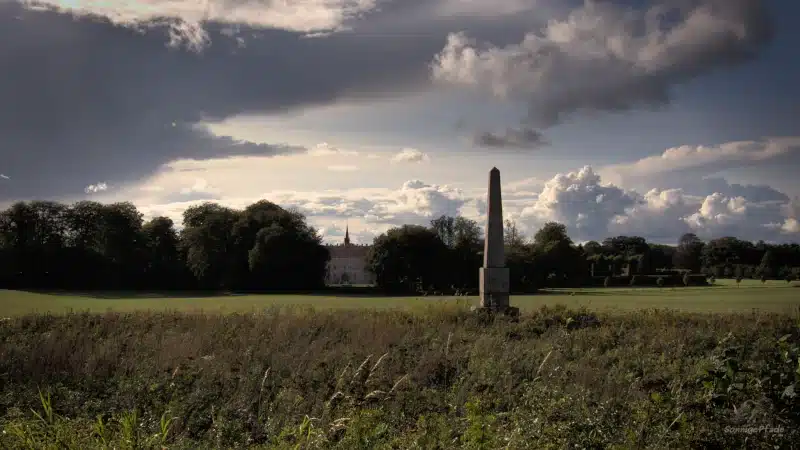
The gatehouse
In the gatehouse, visitors can view another exhibition – The Secret Treasures of the Lady of the Palace. These include above all the refined and picturesquely decorated dresses worn by ladies between 1850 and 1900. The style icons of their time also had a collection of Parisian fashion magazines with outstanding patterns. Part of the exhibition in the gatehouse is dedicated to the everyday clothing of palace servants from this period.
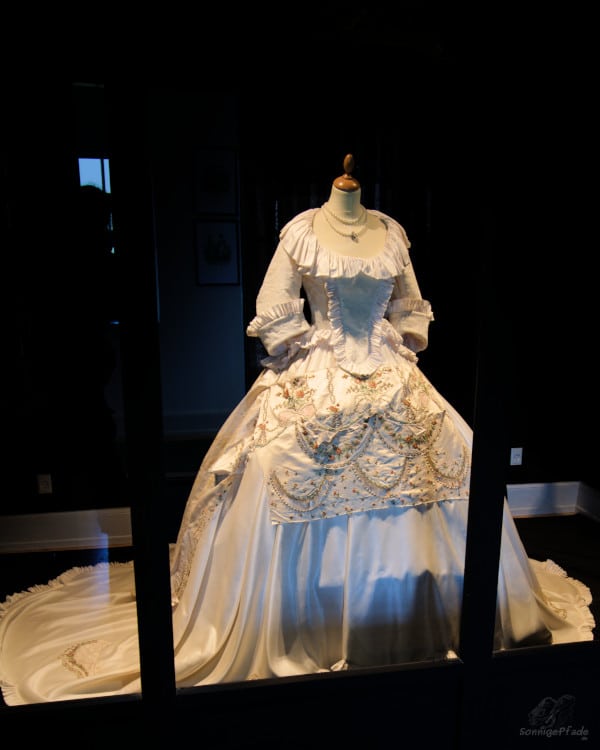
The gardens of Egeskov Castle
A large part of the castle park is taken up by the various themed gardens, which, starting with the Renaissance garden in front of the castle façade, have been continuously created and expanded since the 1960s. Famous garden architects and artists were often involved in the design and decoration of the gardens.
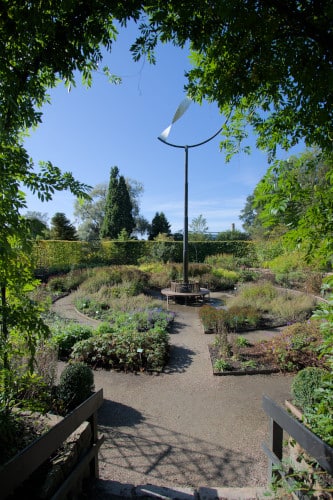
The wealth of gardens is so extensive that it is not possible to go into all of them in detail here. Here is a hopefully complete list:
- Renaissance Garden
- White Garden
- Perennial garden and gray garden
- Piet Hein‘ Sun Garden with sundial +
- Garden of Life
- The Baroness‘ Garden
- Quiet garden – on the edge: Piet Hein’s super ellipse
- The English Garden
- Water Garden
- Dahlia garden
- Fuchsia garden
- Rose Garden
- Hop Garden
- Herb garden / kitchen garden
- Fragrance garden
In the north-eastern part of the park, a historic labyrinth dating from 1730 is actually part of the grounds. However, this area is not open to the public. Instead, a new large labyrinth with hornbeam hedges has been created at the edge of the „play forest“.
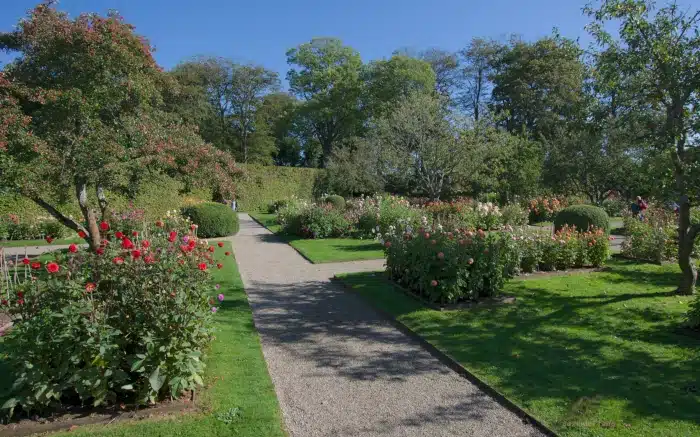
Some examples of gardens at Egeskov in more detail:
The Garden of Life and the Sun Garden
The Garden of Life is laid out in a circle. In the central circle is Piet Hein’s Sun Garden with the sundial. The outer circle is quartered and dedicated to the seasons with their different colors. Water is intended to stimulate the senses and can be found in all the quarters of the year. Plants, colors, scents and shapes symbolize the path of life through the seasons. The poet and designer Piet Hein created the sun garden inspired by the course of the day. At the center is a sundial. The predominant colors of the sun are yellow and red.
Rose garden
The rose garden is located on the island behind the gatehouse. This was laid out by the castle gardener Peter Bonde Poulsen in 2004, the 450th year of Egeskov Castle’s existence.
The basic form of the rose garden is the Maltese cross. Curved wooden benches stand at the ends of each wing of the cross. Surrounding the cross are five circular areas with different collections of roses. The climbing roses are in the outer circle, followed by historic rose bushes. In the third circle are fragrant English roses. The fourth circle is covered by bedding roses and the inner circle by ground-covering roses. Each quarter of the circle contains roses of different colors and color combinations. The rose garden at Egeskov is particularly magnificent during the main flowering periods of June and July.
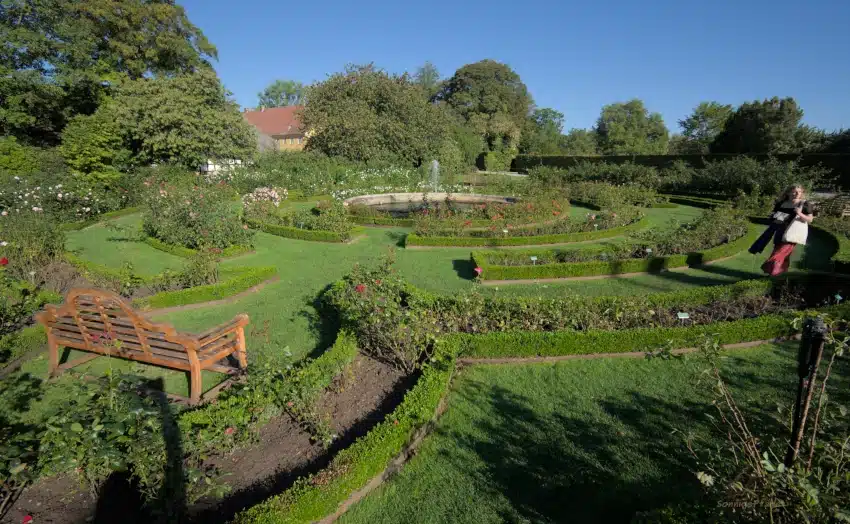
The fuchsia garden
The fuchsia garden at Egeskov is an outstanding attraction. With over 800 species, this garden probably has the largest collection of fuchsias in Europe in one place. Most of the fuchsias are between 40 and 60 years old – some are even over 100 years old! The fuchsias, which are very popular in Denmark, actually require a lot of care: As the plants are not frost-hardy, the gardeners at Egeskov dig up all the over 800 fuchsias every fall and place them in frost-free greenhouses. In the spring after the last night frosts, i.e. after May 20 until the beginning of June, the plants are then brought back into the fuchsia garden.

Kitchen garden and herb garden

The gardens at Egeskov are not just about ornamental nature. A large kitchen garden and herb garden contribute to healthy eating at Egeskov Castle – also in the Café Jomfru Rigborg next to the White Garden. The herb garden was created by Countess Nonnie in the early 1970s and combines tasty yields with good smells and colorful flowers. You can linger in this fertile idyll in pavilions located in the corners of the kitchen garden. A few beehives also enrich the kitchen garden and the breakfast table with fresh honey.
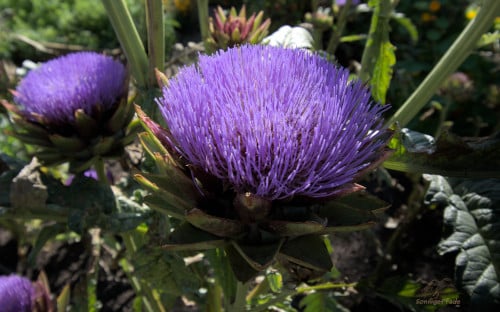
The scented garden
Where the manure heap once marked the agricultural estate, there is now a wealth of pleasant smells: The scented garden has been set up on the old estate. A wide variety of herbs for the kitchen and medicine cabinet can be found here, exuding their more or less strong fragrance. Numerous signs with names and uses mean that the scented garden can be used for further education in herbalism.

What else is there to see at Egeskov Castle?
The forge
Next to the castle lake is a handsome building made of yellow brick. This is the old forge of the manor. Inside, the blacksmith’s workshop has been preserved and the tools are neatly stowed away. One door leaf shows a variety of ornate hand-forged fittings that give an idea of the variety of craftsmanship from the time before industrial production.

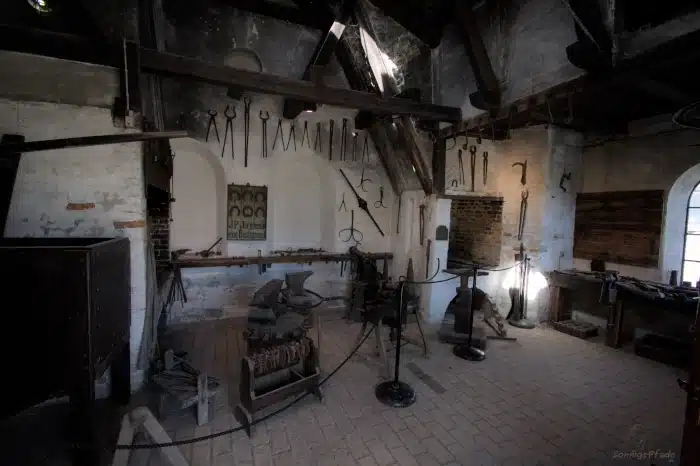
Exhibitions
One of the old stable buildings houses an exhibition of carriages, bicycles and vehicles, which illustrates the development from „muscle-powered“ to „combustion-powered“ mobility with a variety of models. There are interesting technical solutions from the transition period in particular, such as bicycles with add-on engines or motorcycles with „gear ring cooling fins“.
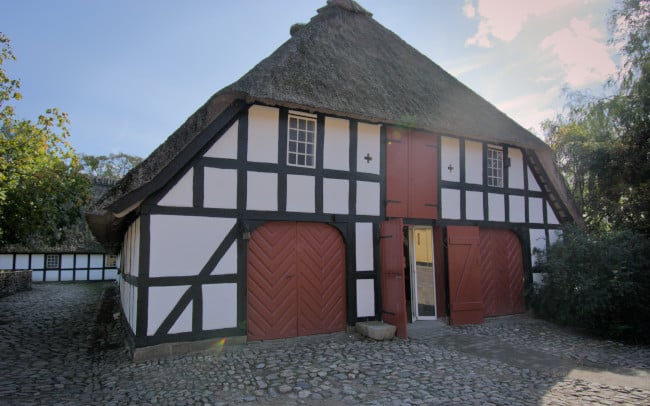
Further extensive exhibitions will follow, some of them even in specially built new halls. These alone are worth a visit to Egeskov Castle. Below are the most important parts of the exhibition:
- A large display of vintage cars and other vehicles (including airplanes)
- The Count’s extensive motorcycle collection with models from all over the world
- Rescue and fire department vehicles
- Camping and caravanning from the origins to the latest developments

Playscape
If the children are overwhelmed by the variety of exhibitions and gardens, the extensive play areas offer good opportunities to let off steam. From a labyrinth to a climbing pyramid, an adventure ship and a cable car, as well as a treetop path over a suspension bridge, there is plenty of variety.
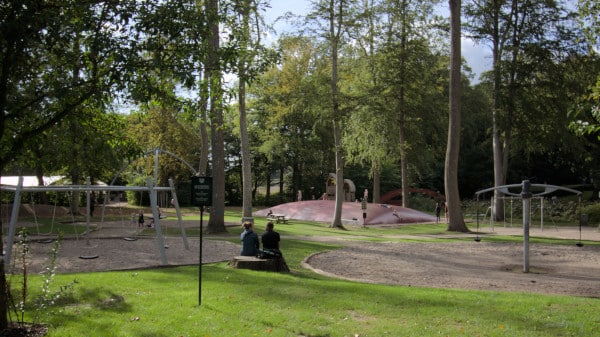
*Contains advertising!
Travel tips for a visit to Egeskov Castle
How to get there
Egeskov Castle is located on the Danish island of Funen in the Baltic Sea. The island is connected by bridges from both Jutland (mainland Denmark north of the German Schleswig Holstein) and the island of Zealand (with the Danish capital Copenhagen). Great Belt Bridge to/from Zealand is subject to tolls. The best place to travel to is Kværndrup on the direct road from Odense to Svendborg. From Kværndrup you have to drive about 2 km southwest on the road towards Faaborg.
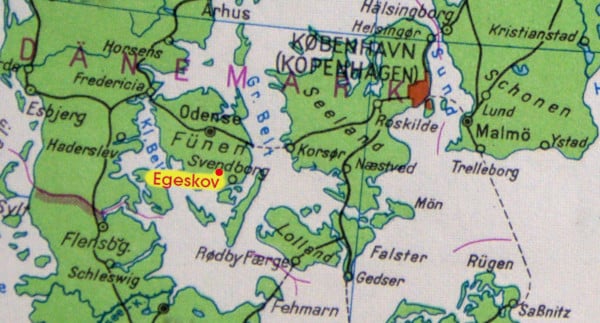
Kværndrup has a train station on the line from Odense to Svendborg, from where you can walk to Egeskov Castle on a separate footpath and cycle path.
If you are cycling across Funen, it is best to use the smaller side roads to get there.
Opening hours and prices at Egeskov Castle
Opening
Egeskov Castle and Park are open seasonally from around the end of April to the end of October. The daily opening hours start at 10:00 and end at 5p.m.. From midsummer (approx. 24.6.) to the beginning of August the opening hours are extended into the evening until 7p.m.. There are occasional „open by night“ events at Egeskov Castle during the main holiday season, on these days it is even open until 10p.m..
There are additional opening hours in the winter months for Halloween and for the Christmas market at the castle.
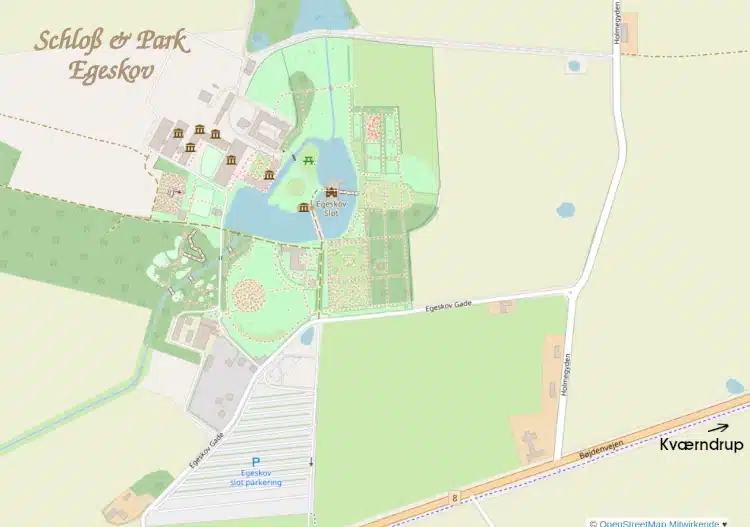
Entrance fees
The entrance fees for Egeskov Castle and Park are staggered. If you only want to visit the park (including the gatehouse and vehicle exhibitions), the entrance fee is 225 Danish kroner for adults and 145 kroner for children. With a visit to the castle building, the entrance fee increases to 265 kroner for adults, children pay the reduced entrance fee of 160 kroner. For children up to 4 years the entrance to Egeskov Castle and Park is free.
If you want to visit Egeskov Castle several times a year, you can reduce the entrance fee from the second visit onwards with an annual pass. The annual pass costs 435 crowns for adults and 225 crowns for children. If you are in the region with your family for a longer period of time, it is also worthwhile because of the extensive playground and the varied exhibition themes.

Weather for your castle visit
The weather forecast for your visit to Egeskov Castle today and over the next three days is shown in the table opposite. Even if the prospects are perhaps not so good – there are enough indoor exhibitions in the castle and in the former manor halls to fill a day even in rainy weather.
Fancy more sights on Funen?
Visit the dolmens at Lindeskov and the medieval ramparts at Magelund Voldsted!
A tranquil little town on the Great Belt – Kerteminde
Meet the Olsen Gang – in Nyborg by the Great Belt Bridge!
Image source °Overview map of Park Egeskov – openstreetmap and contributors
